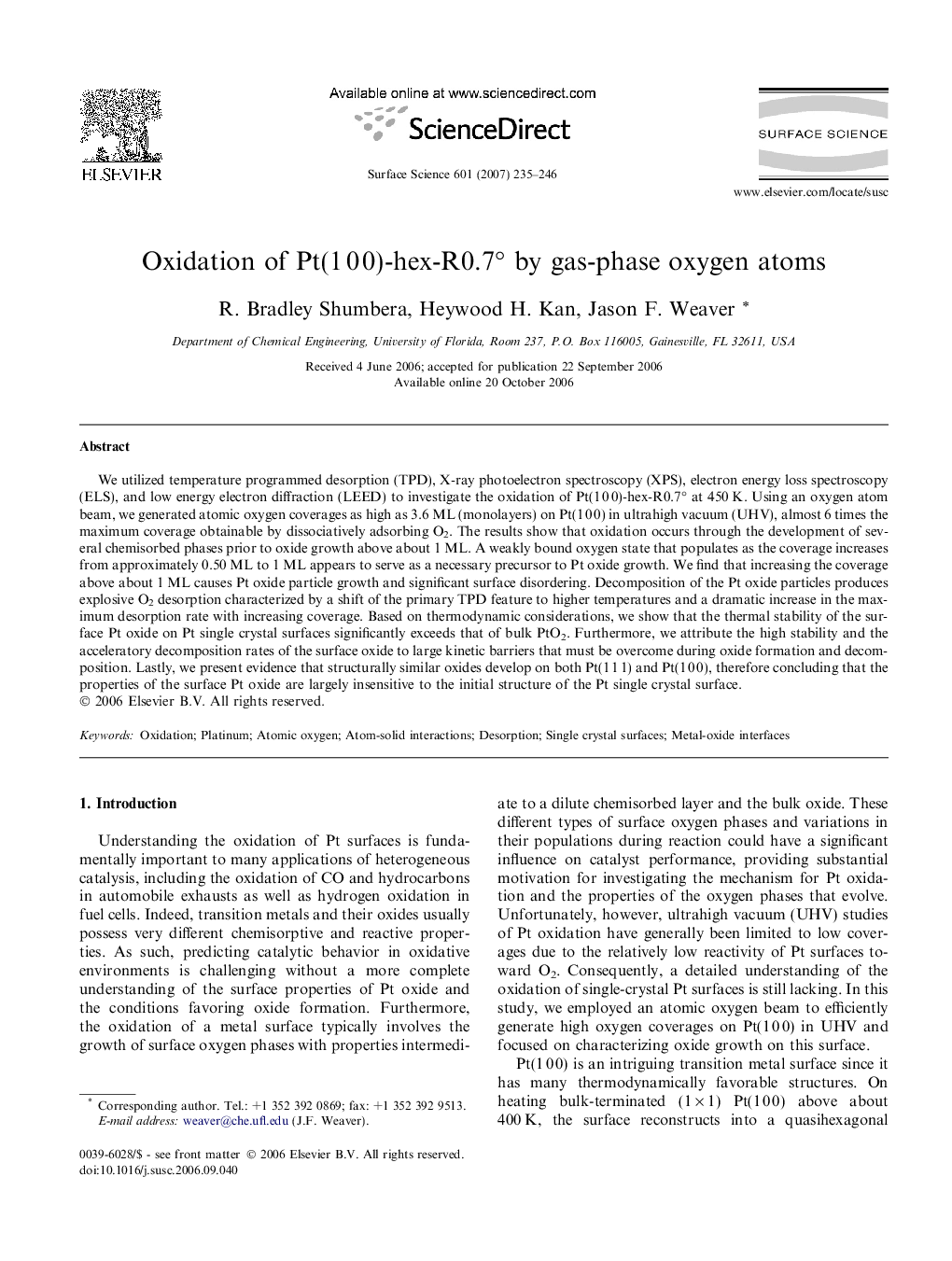| Article ID | Journal | Published Year | Pages | File Type |
|---|---|---|---|---|
| 5426248 | Surface Science | 2007 | 12 Pages |
We utilized temperature programmed desorption (TPD), X-ray photoelectron spectroscopy (XPS), electron energy loss spectroscopy (ELS), and low energy electron diffraction (LEED) to investigate the oxidation of Pt(1 0 0)-hex-R0.7° at 450 K. Using an oxygen atom beam, we generated atomic oxygen coverages as high as 3.6 ML (monolayers) on Pt(1 0 0) in ultrahigh vacuum (UHV), almost 6 times the maximum coverage obtainable by dissociatively adsorbing O2. The results show that oxidation occurs through the development of several chemisorbed phases prior to oxide growth above about 1 ML. A weakly bound oxygen state that populates as the coverage increases from approximately 0.50 ML to 1 ML appears to serve as a necessary precursor to Pt oxide growth. We find that increasing the coverage above about 1 ML causes Pt oxide particle growth and significant surface disordering. Decomposition of the Pt oxide particles produces explosive O2 desorption characterized by a shift of the primary TPD feature to higher temperatures and a dramatic increase in the maximum desorption rate with increasing coverage. Based on thermodynamic considerations, we show that the thermal stability of the surface Pt oxide on Pt single crystal surfaces significantly exceeds that of bulk PtO2. Furthermore, we attribute the high stability and the acceleratory decomposition rates of the surface oxide to large kinetic barriers that must be overcome during oxide formation and decomposition. Lastly, we present evidence that structurally similar oxides develop on both Pt(1 1 1) and Pt(1 0 0), therefore concluding that the properties of the surface Pt oxide are largely insensitive to the initial structure of the Pt single crystal surface.
